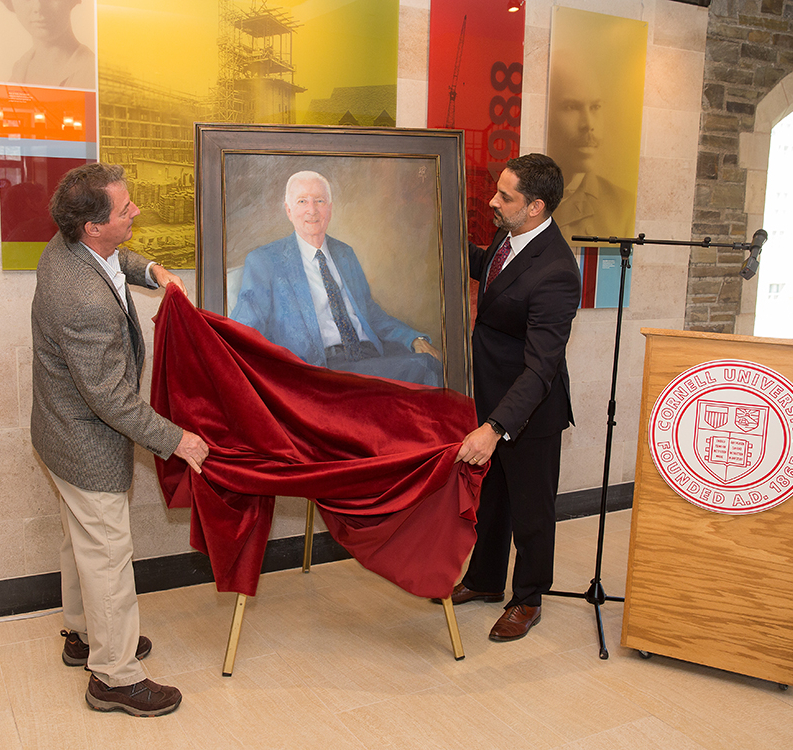This website uses cookies
We use cookies to ensure that we give you the best experience on our website. If you continue to use this site we will assume that you are happy with it.

On April 24, with spring arriving on campus, Dean Eduardo Peñalver stood in the lobby of Myron Taylor Hall and spoke about the Law School’s three greatest benefactors: Taylor, Jane Foster, and Jack G. Clarke ’52, whose portrait stood on an easel beside him, waiting to be unveiled.
“Jack is quite simply one of the most transformative figures in the history of Cornell Law School,” said Peñalver, the Allan R. Tessler Dean and Professor of Law, opening the celebration. “Inspired by the lessons he learned in his career, Jack has invested his Cornell philanthropy in the people and programs that operate on campus and around the world. He’s helped make Cornell a more global institution, and though his name is not on a building, his support has been so broad and so deep that his name is virtually synonymous with Cornell Law.”
A list of Clarke’s greatest gifts followed, as people around the room nodded in agreement: The Clarke Center for International and Comparative Legal Studies. The Clarke Program in East Asian Law and Culture. The Clarke Initiative for Law and Development in the Middle East and Africa. The Jack G. Clarke Institute for the Study and Practice of Business Law. The Jack G. Clarke Professor of Far East Legal Studies. The Dorothea S. Clarke Professor of Feminist Jurisprudence. The Jack G. Clarke Professor of International and Comparative Law. Then, after praising Clarke as one of only two lifetime members of the Cornell Law School Advisory Council and one of only a small number of Cornell alumni to be named Foremost Benefactors, Peñalver unveiled the portrait to reveal Clarke dressed in a light blue blazer, a speckled tie, and a smile.
“As I thought about this day, I reflected about how fortunate my life has been and how important Cornell Law School has been to me,” said Clarke, speaking quietly from the podium. Three months short of his 90th birthday, Clarke gave little attention to his accomplishments as a director and negotiator at Exxon, focusing instead on thanking the people who’d meant the most to him: his mother, who raised him on her own since his father died when Jack was two; his wives, Dorothea (who died some twenty years ago) and Grace; his children, grandchildren, and great-grandchildren; his favorite professors, David Curtiss and Rudi Schlesinger; and his closest colleagues among the Law School staff and faculty.
For Stewart Schwab, who traveled with Clarke through Asia and the Middle East, it was a speech that showed the best of Clarke—his modesty, sense of humor, and deep emotionalism—with a portrait to match. “You can see the thoughtfulness, the twinkle in his eyes,” said Schwab, the Jonathan and Ruby Zhu Professor of Law, describing the painting by William Benson. “That’s the best part: the eyes. It looks like he’s about to ask a quiet question, one that really gets to the heart of what’s most important. That’s Jack’s style. He has a way of seeing the best in people and expressing his emotions when he feels deeply about something. I think that’s what came out today in his talk. It was very touching, unusually so. Certainly, my life has been enriched by Jack, but I think that could be said by all of us, by everyone who’s ever passed through these doors.”